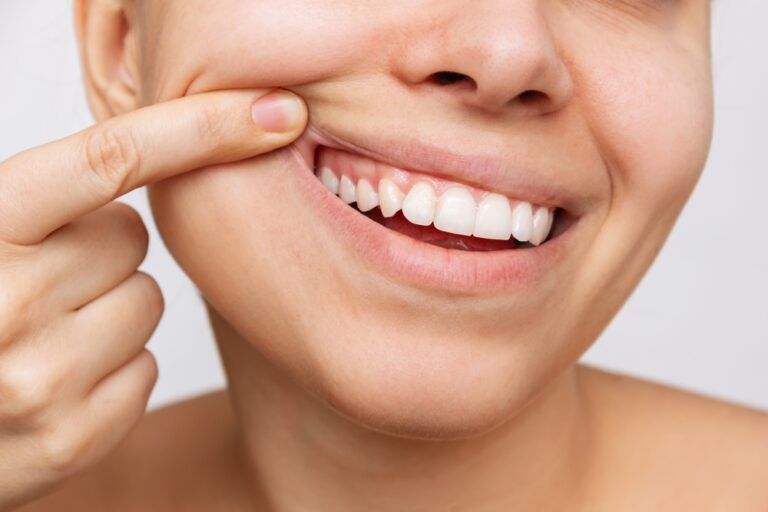Understanding How Lip Fillers Help with Gummy Smiles

A “gummy smile” is a term used to describe a smile that reveals an excessive amount of gum tissue above the upper teeth. While the definition of “excessive” can vary, it typically refers to cases where more than 3 to 4 millimeters of gum is visible. Though a gummy smile is not medically concerning in most cases, it can make some individuals feel self-conscious or dissatisfied with the overall balance of their facial features.
There are several underlying causes of a gummy smile. These include a hyperactive upper lip muscle, short upper lip anatomy, excessive vertical growth of the upper jaw, or altered passive eruption, where the teeth appear shorter than they actually are due to gum overgrowth. Because of the multiple causes, the approach to treating a gummy smile can vary and may involve orthodontics, surgery, Botox, or dermal fillers depending on the patient’s needs and goals.
The Role of Lip Fillers in Smile Balance
Lip fillers are typically associated with cosmetic volume enhancement, but they can also play a strategic role in minimizing the appearance of a gummy smile. When administered thoughtfully, fillers can create subtle changes in lip posture that reduce the amount of visible gum tissue when a person smiles.
In cases where the upper lip is naturally thin or curls upward when smiling, dermal fillers can add volume and slightly reposition the lip so it covers more of the gum line. This is especially useful for people whose gummy smile is primarily caused by soft tissue characteristics rather than skeletal structure. The goal isn’t to create a drastically fuller lip, but rather to improve lip-to-gum proportions for a more balanced aesthetic.
How Dermal Fillers Work in This Context
Dermal fillers used for treating gummy smiles typically contain hyaluronic acid, a naturally occurring substance in the body that provides volume and hydration to the skin. When injected into specific areas of the upper lip, the filler can influence how the lip moves and rests, leading to less gum exposure during a smile.
This technique is sometimes combined with neuromodulators such as Botox for individuals with hypermobile upper lips. In such cases, Botox can reduce the elevation of the lip during smiling, while filler adds volume and structure. However, fillers alone are often sufficient for patients whose main concern is lip thinness or lack of coverage over the gums.
The results are not permanent but can last anywhere from six months to a year, depending on the individual’s metabolism, filler product used, and other factors. Because of this, patients can choose to maintain the look with routine touch-ups or allow the filler to gradually wear off over time.
What to Expect from the Procedure
The process of using lip fillers to address a gummy smile is relatively quick and minimally invasive. It usually takes about 15 to 30 minutes in total and can be performed during an office visit. Most patients report little to no pain, as numbing agents are typically used during the procedure.
There may be some mild swelling or bruising in the days following the treatment, but these side effects usually resolve quickly. Patients are generally able to return to normal activities shortly after the procedure, though it’s recommended to avoid strenuous activity and excessive lip movement for at least 24 hours.
The full effect of the filler becomes visible once swelling subsides, usually within a week. Patients who are satisfied with the results often return for repeat treatments to maintain their preferred look and reduce future gum exposure over time.
Is Filler the Right Option for a Gummy Smile?
While dermal fillers can be highly effective for some patients, they are not a universal solution for all gummy smiles. The ideal candidates are individuals whose gummy smiles are caused by a combination of lip shape, volume, and soft tissue mobility. If the underlying issue is skeletal or dental—such as vertical maxillary excess or altered tooth eruption—fillers may offer only limited improvement.
That said, fillers are often a great starting point for people looking to explore non-surgical options. They offer a reversible, low-risk way to experiment with changes in facial aesthetics. In some cases, fillers can also be used in conjunction with orthodontic treatment or Botox to enhance the outcome.
A comprehensive assessment by a trained provider can help determine the underlying cause of a gummy smile and whether lip fillers alone—or in combination with other treatments—can help achieve the desired look.
Advantages and Limitations of Lip Fillers for Smile Correction
Like any cosmetic treatment, fillers come with both benefits and limitations. Understanding these can help patients make informed decisions about whether this approach aligns with their goals.
Advantages:
- Minimally invasive with no surgery required
- Quick treatment with minimal downtime
- Reversible and adjustable with hyaluronidase if needed
- Subtle, natural-looking results when performed correctly
- Can be combined with other treatments like Botox or orthodontics
Limitations:
- Temporary results requiring maintenance
- Limited effectiveness for skeletal causes of gummy smiles
- Potential for asymmetry or overcorrection if not expertly done
- Mild side effects such as bruising, swelling, or tenderness
By weighing these pros and cons, patients can better determine whether filler treatment is suitable for their specific case or if a different approach might be more effective.
How Smile Aesthetics Impact Self-Confidence
Facial expressions, especially smiles, play a significant role in how people perceive themselves and others. For those who feel that their gums are too prominent when they smile, this perceived imbalance can lead to self-consciousness, social withdrawal, or dissatisfaction with appearance.
Cosmetic interventions like lip fillers are not solely about achieving a certain beauty standard—they are also about helping individuals feel more comfortable and confident in their own skin. When applied with care and precision, these small enhancements can lead to significant boosts in self-esteem and emotional well-being.
That being said, the decision to undergo treatment should always be personal and made with realistic expectations in mind. Not everyone feels that a gummy smile requires intervention, and many people embrace their natural features confidently. For others, cosmetic adjustments can offer a pathway to increased comfort and satisfaction with their appearance.
Final Thoughts on Choosing the Right Approach
For individuals who are curious about reducing the appearance of a gummy smile, dermal fillers present a compelling, non-surgical option. While not a cure-all, they can offer subtle yet meaningful improvements for those with soft tissue-related concerns. Consulting with an experienced aesthetic provider can clarify what’s causing the gummy smile and outline the best path forward—whether that includes fillers, orthodontics, Botox, or a combination of treatments.
Understanding the available options and their limitations is key to making a confident, informed decision. Lip fillers, when used strategically, can help achieve a more harmonious smile without surgery, making them an appealing consideration for those seeking subtle facial enhancement.
Resources
Ishida, L. C., et al. (2016). Botulinum toxin for the treatment of gummy smile. Aesthetic Surgery Journal
Pavone, A. F., et al. (2016). Aesthetic parameters in the smile analysis: An overview. Journal of Cosmetic Dermatology
de Santana Santos, T., et al. (2013). Management of excessive gingival display with botulinum toxin. Plastic Surgery International

Recent Comments